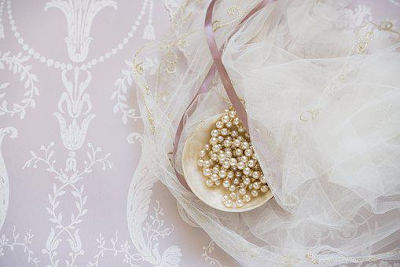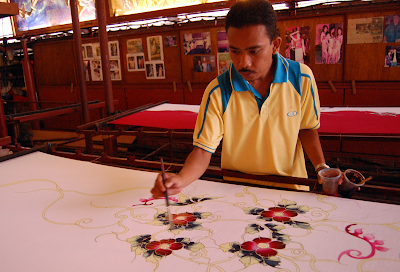Featured
- Get link
- X
- Other Apps
Barbie
Barbie's relationship to fashion, sex, femininity, and cultural values has been the subject of spin control, change, and controversy ever since the Mattel firm first launched the doll in 1959.
The ambition of Ruth Handler, a co-founder of Mattel, to create a three-dimensional version of the paper fashion dolls her daughter, Barbara, liked was highlighted in early official versions of Barbie's origins.
However, the German figure Lilli, who first emerged in cartoon and doll form as a sexpot plaything for grown men, is where Barbie's body originally came from.
Barbie, the "shapely adolescent Fashion Model!" advertised in early catalogs, was created when Mattel acquired all the rights and patents necessary to take Lilli out of that context.
Soon after the doll's release, changes occurred as Mattel tried to adapt Barbie's image to sales and ancillary items.
Barbie was still referred to as a fashion model in a 1961 television commercial, but she now had a boyfriend, a social life, and clothes for everything from frat parties to school lunches:
"Think of the fun you'll have taking Barbie and Ken on dates, dressing each one just so."
The advertisement's call to "see where the romance will lead" portrayed Barbie's idyllic future by featuring her wearing a wedding gown, a look that would reoccur in several later iterations.
The most recent in formal dress, casual apparel, sports gear, and lingerie were among the further ensembles to come.
Many outfits were based on the creations of modern designers.
Sometimes Mattel hired designers directly, particularly for the high-end products that were eventually developed to profit from the growing demand for Barbie collections.
Similar to the 1991 "Limited Edition Platinum Barbie" by designer Bob Mackie, they sometimes sold for up to several hundred dollars apiece.
Colors and Careers.
Additionally, as time went on, Barbie saw more alternatives for a certain costume that attracted admiration, levity, skepticism, and derision: the professional costume.
Barbie's occupational identities in the early 1960s were generally stereotypically female professions like nurse, highly improbable professions like astronaut, or both, such dancer.
Ironically, Barbie had less employment throughout the 1970s, when popular feminism was growing.
However, the Day-to-Night Barbie line launched her career in the middle of the 1980s.
In its original version, Barbie was shown as an executive with a pink suit that could be changed into evening attire.
She arrived with the slogan "We Girls Can Do Anything," which was also relevant given the variety of professions that Barbie took on in the 1990s, including doctor, veterinarian, UNICEF ambassador, rock star, rap artist, teacher, cook, Marine Corps sergeant, and WNBA professional basketball player.
Career Barbies met a crucial shift in Mattel's marketing approach, as well as questions about whether a girl with few obvious hobbies other than fashion, pleasure, and spending a lot of money on clothing, automobiles (like the Barbie Ferrari), and real estate (like the famous Barbie Dream House).
Initially, Mattel encouraged customers to adorn their original Barbie with clothes, accessories, and other figures like Ken and Midge, Barbie's close but rather unglamorous pal.
In reality, there was a trade-in offer included in the advertising for the 1967 Twist 'N Turn Barbie.
Promotions were afterwards made to encourage the purchase of many Barbies.
A Barbie owner interested in the rapper suit, for instance, had to purchase Rappin' Rockin' Barbie in 1992, or four of them to acquire each of the several boom boxes.
The rise of Barbies of color and Barbies from nations other than the United States was another trend promoted by Mattel that appealed to both sales and social concern.
The number of Barbies the "typical kid" has has increased from seven to 10 over the period of the 1990s, suggesting that Mattel was successful in directing numerous purchases to Barbie.
Controversies.
The controversy surrounding Barbie's (unrecyclable) plastic body and the flesh to which it may or may not correspond has grown along with her appeal.
Barbie's world appears to be diversity lite because there are so many white, blond Barbies who are unquestionably front and center, as well as a much smaller number of Barbies who have had their skin and hair dyed to look like white Barbies.
According to some critics, Barbie represents shallow feminism that is primarily concerned with the success and fulfillment of the individual.
Other criticisms include the claims that Barbie's exclusivity to boys due to Mattel adds to the cultural narratives guiding young people to view heterosexuality as the desired, if not the required, norm, that Barbie's impossible-to-attain proportions contribute to cultural ideals of beauty that encourage self-loathing and unhealthy eating habits, and that Barbie encourages an excessive emphasis on appearances in general.
Why not offer a girl a soccer ball instead of Soccer Barbie (1999)?
However, despite not having Mattel's official sponsorship, Barbie has attracted a lot of play, as several observers have pointed out.
The Mattel WNBA Barbie may not have the trademark butch flair that many of her endearing human counterparts exhibit when they first step out of the box, but in the hands and minds of many consumers, Barbie has been butched out, turned out, fixed up with a variety of sex partners, and, of course, undressed; for a doll whose wardrobe serves as the focal point of her reputation, she spends quite a bit of time naked.
However, according to some detractors, Mattel is also to blame for this.
People who believe that youngsters are sexually immature have accused the corporation of influencing their children's thoughts via the usage of its big-breasted adult doll.
Others, on the other hand, have lamented what Mattel was unable to do, such as instill femininity in their girls or disdain in their boys who had adequate interest in trucks.
Object of Interest One truth emerges from all these many ways that Barbie is used and evaluated.
Barbie continues to draw interest, awe, and purchases, of course.
Whatever her influence has been—and it has undoubtedly changed over time and among different people—she has been effective in persuading many of her significance as a symbol of femininity, a spark for imagination, and a signifier and agent of cultural ideals.
Find Jai on Twitter | LinkedIn | Instagram
See also:
Fashion and Identity; Fashion Dolls.
References And Further Reading:
BillyBoy. Barbie: Her Life and Times. New York: Crown Publishers, 1987. Excellent source of fashion study and illustrations.
DuCille, Ann. Skin Trade. Cambridge, Mass.: Harvard University Press, 1996. Critical issues including race.
Lord, M. G. Forever Barbie: The Unauthorized Biography of a Real Doll. New York: Morrow and Company, 1994. History.
Rand, Erica. Barbie’s Queer Accessories. Durham, N.C., and London: Duke University Press, 1995. History, consumers, subversions.
- Get link
- X
- Other Apps











